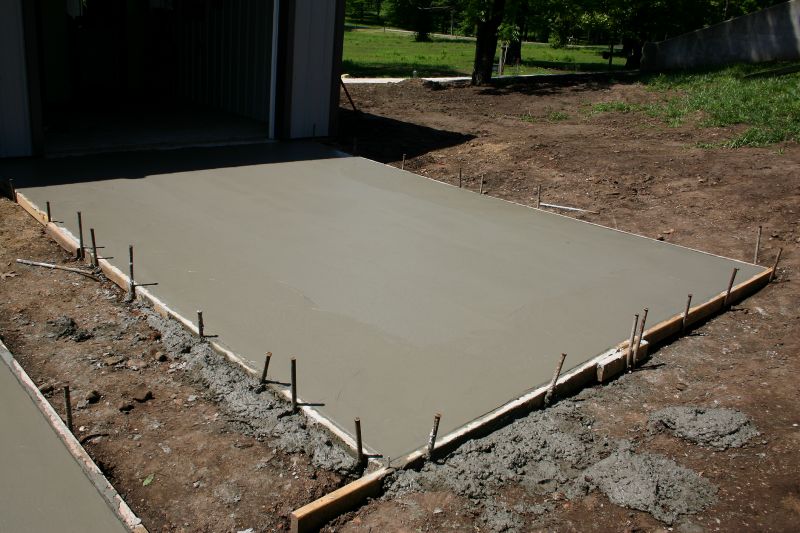Expert Picks for Concrete Pad Installation Products and Accessories
Find the most reliable and effective tools recommended by professionals for smooth and lasting concrete pad setups.
 Constructing a durable and level concrete pad requires careful selection of the right products to ensure stability and longevity. From foundational materials to surface finishing tools, there are numerous options available to support various installation needs. Proper preparation, including selecting suitable base materials and reinforcement options, is crucial to achieving a successful concrete pad. Additionally, accessories such as form boards and curing supplies can influence the final outcome. Understanding the different product categories and their functions helps in making informed choices for your project.
Constructing a durable and level concrete pad requires careful selection of the right products to ensure stability and longevity. From foundational materials to surface finishing tools, there are numerous options available to support various installation needs. Proper preparation, including selecting suitable base materials and reinforcement options, is crucial to achieving a successful concrete pad. Additionally, accessories such as form boards and curing supplies can influence the final outcome. Understanding the different product categories and their functions helps in making informed choices for your project.
Top Overall Option
Concrete Form and Reinforcement Kit
A comprehensive concrete form and reinforcement kit provides all the essential components needed for creating a stable and level concrete pad. It typically includes form boards, stakes, reinforcement mesh or rebar, and accessories to facilitate precise shaping and support. This type of kit is designed to streamline the installation process, making it suitable for both DIY enthusiasts and professionals. While it does not guarantee specific results, it offers versatility and convenience for various concrete pad projects.
Types of Products For Concrete Pad Installations
Gravel and Crushed Stone
Used as a base layer to promote drainage and stability, gravel and crushed stone are fundamental for foundational support.
Reinforcement Mesh and Rebar
These materials help strengthen the concrete, reducing the risk of cracking and enhancing durability.
Form Boards and Stakes
Essential for shaping the concrete and maintaining the desired dimensions during pouring and setting.
Concrete Mix
The primary material for creating the actual pad, available in various mixes suited for different load and setting requirements.
Curing Compounds and Sealers
Applied post-pour to aid in proper curing and surface protection against surface damage and moisture.
Vibrators and Tamps
Tools used to remove air pockets and ensure proper compaction of the concrete for a smooth finish.
Leveling Tools
Includes screeds and floats to achieve a flat and even surface during and after pouring.
Concrete Edgers and Groovers
Help create clean edges and control joints to manage cracking and improve aesthetics.
Water Curing Blankets
Assist in maintaining moisture levels during curing, especially in hot or dry conditions.
Expansion Joints
Allow for movement in the concrete to prevent cracking over time.
Form Release Agents
Facilitate easy removal of form boards after the concrete has set.
Concrete Coloring and Additives
Optional products to enhance appearance or modify setting times and strength.
Popular Choices
Convenient for small projects, these ready-to-use mixes simplify the pouring process.
Widely used for foundational support in various concrete pad projects.
A common reinforcement option that helps distribute loads evenly across the pad.
Reusable and lightweight, ideal for shaping concrete edges and borders.
Essential for finishing and smoothing the surface of the concrete.
Help eliminate air pockets and achieve uniform density in the poured concrete.
Popular for maintaining moisture during the curing process, especially in warm climates.
Assist in achieving a flat, even surface during the pouring stage.
Commonly used to accommodate movement and prevent cracking.
Protect the finished surface from stains, moisture, and wear.
Help keep the concrete moist during the critical curing phase.
Ensure easy removal of forms and clean edges.
Concrete pad installation often begins with a solid foundation, typically involving gravel or crushed stone to facilitate drainage and provide stability. Reinforcement options like mesh or rebar are commonly used to prevent cracking and improve structural integrity. Forming tools, including form boards and stakes, help shape the concrete during pouring, ensuring a level and uniform surface. Once poured, curing compounds and sealers are applied to promote proper setting and protect against surface damage. Each of these components plays a vital role in creating a successful concrete pad that meets your specific needs.
Selecting the right products involves considering the size and load requirements of the pad, as well as the environmental conditions of the installation site. Compatibility between materials, ease of use, and durability are key factors. Proper planning and the right product choices can streamline the installation process, reduce potential issues, and extend the lifespan of the concrete pad. Whether for a small patio, a driveway, or a foundation for a structure, understanding the available options ensures a more efficient and effective project outcome.
Key Buying Considerations
- Project size and scale determine the quantity and type of materials needed.
- Soil conditions and drainage requirements influence foundation choices.
- Load-bearing capacity of the concrete pad based on intended use.
- Compatibility of reinforcement materials with the concrete mix.
- Ease of handling and installation, especially for DIY projects.
- Durability and resistance to environmental factors such as moisture and temperature changes.
- Availability of tools and accessories to facilitate the installation process.
- Cost-effectiveness and quality balance for long-term performance.
- Curing and finishing options to achieve desired surface characteristics.
- Local building codes and regulations that may affect material selection.
- Environmental conditions during installation, including weather considerations.
- Reusability and storage options for form and reinforcement materials.
- Safety features and handling instructions for all products.
- Compatibility with existing structures or landscape features.
- Vendor reputation and product reviews for reliability and support.
